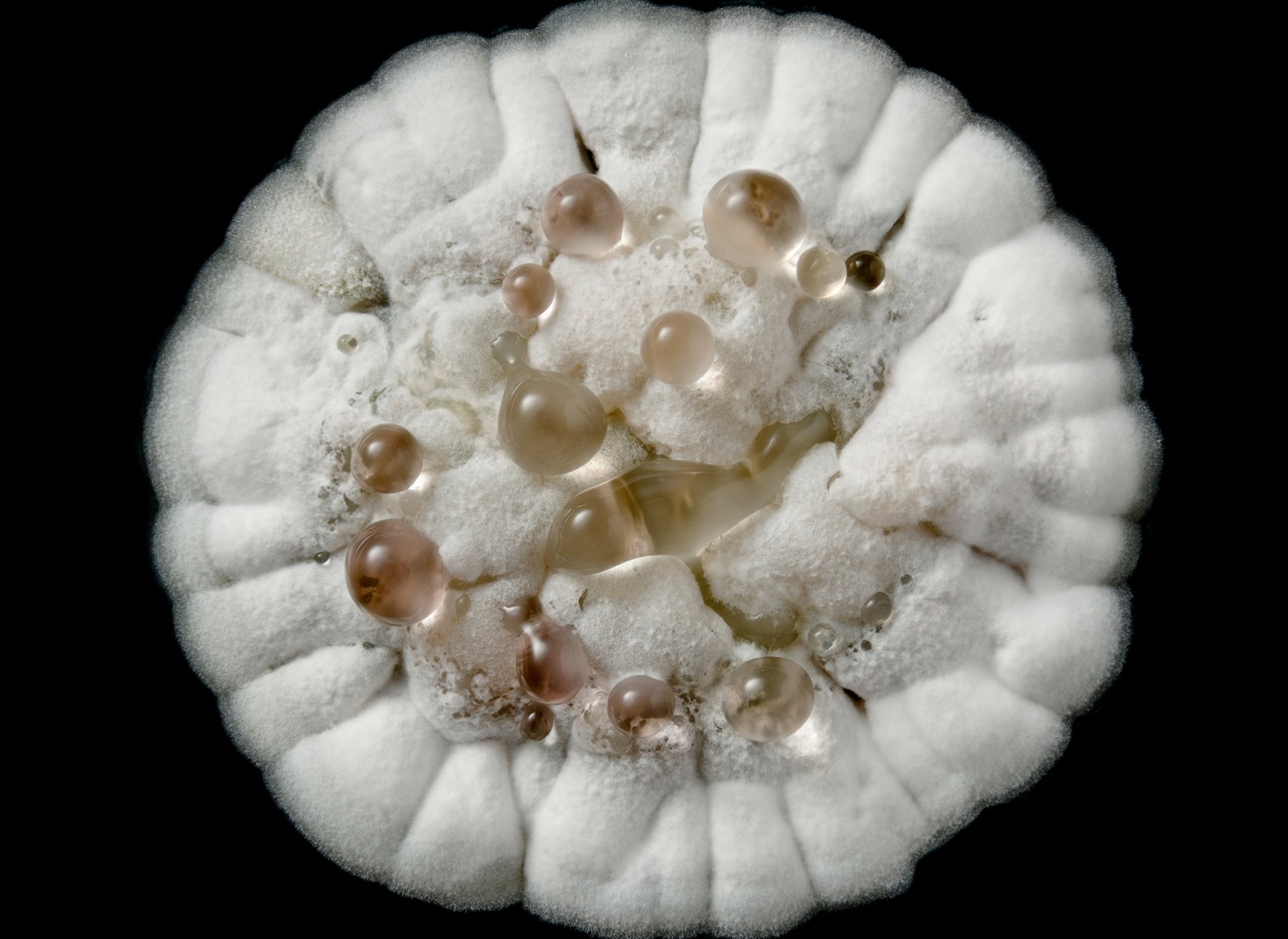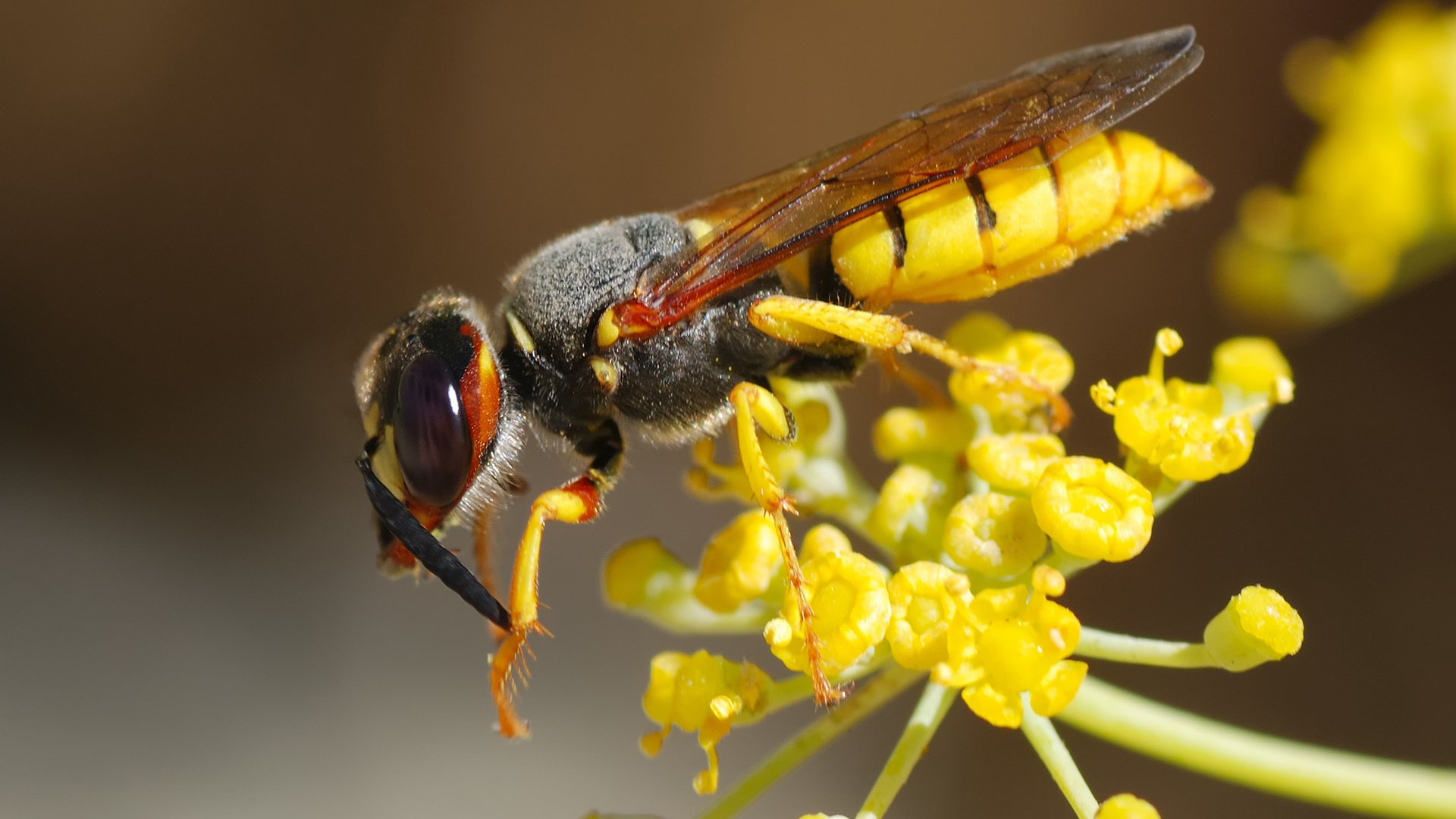Antennae
Beewolves are solitary vespoidea. In their underground holes, they build brood cells in which their larvae creep out of eggs and develop. However, these larvae are continually at threat from fast-growing fungi ; their spores are omnipresent in the soil. This is why adult females cultivate streptomycetes in their antennae. These soil bacteria produce a cocktail consisting of dozens of antimicrobial agents. The females deposit these bacteria on the walls of the brood cells. When a larva makes a cocoon, it weaves the streptomycetes into the side of it. In this way, the bacteria and their antimicrobial agents form a protective layer that prevents fungi from penetrating the cocoon and infecting the larva.
No change in 68 million years
The 25 types of beewolf studied use very similar combinations of antimicrobial agent, based on streptochlorine and piericidine. The German researchers had expected that, as beewolves and their bacteria evolved, they would have developed new agents that enabled them to withstand new or resistant moulds; they found that this was not the case. The team discovered that the cocktail has been surprisingly stable since the symbiosis emerged some 68 million yeas ago. Nevertheless, no resistant pathogens have ever been encountered in beewolves. As such, the cocktail must have been a very complex and adaptive one right from the very start.
Less selective
Molecular research on how the antimicrobial agents work revealed that the enzymes that produce the symbiotic streptomycetes in beewolves are far less specific than those for free-living streptomycetes. This lack of specificity ensures that the antibodies attack far more and different chemical processes in the pathogen, making them more efficient at killing a wide variety of fungi. This makes it possible for specific beewolf populations to adapt to local fungi communities to a certain extent.
New drugs?
Many of our antibiotics and other antimicrobial agents originate from streptomycetes. Perhaps the types that live in the antennae of the beewolves could help to develop new drugs to which resistance develops less quickly. If so, it will still be important for these agents to be used responsibly.

Picture: Micropia/Wim van Egmond
Source: Engl et al. 2018 - Evolutionary stability of antibiotic protection in a defensive symbiosis

